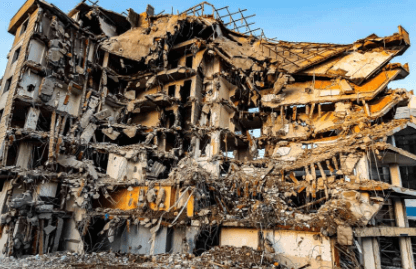
Building:7tm3p6inp9w= Earthquake
You’ve likely noticed the increasing discussions around the recent earthquake, Building:7tm3p6inp9w=. Its impact on urban structures raises serious questions about how well our cities can withstand such seismic events. As you consider the implications, think about the engineering standards currently in place and whether they’re sufficient. Communities are urged to take action, but what specific measures can truly make a difference? The answers might surprise you, as they could reshape the future of urban resilience in ways you hadn’t anticipated.
Overview of the Earthquake
In the wake of the recent earthquake, it’s crucial to understand its magnitude and impact.
Analyzing historical earthquakes reveals patterns in seismic activity that can inform your preparedness.
You’ll notice that the earthquake’s intensity and duration directly correlate with the potential for damage.
Recognizing these factors helps you appreciate the risks involved and encourages proactive measures to safeguard your environment and community.
See also: Building:6h3hrbj5bb8= Architect
Impact on Urban Structures
Understanding the earthquake’s magnitude and intensity reveals significant implications for urban structures.
You’ll notice that enhancing structural resilience through seismic retrofitting becomes essential. Buildings that undergo retrofitting can better withstand seismic forces, reducing potential damage.
As urban areas evolve, prioritizing these upgrades ensures safety and longevity, ultimately allowing communities to thrive even in the face of natural disasters.
Engineering Standards and Innovations
Advancing engineering standards and innovations is crucial for enhancing the resilience of buildings in earthquake-prone regions.
By integrating advanced seismic design techniques, you can significantly improve structural resilience.
Utilizing innovative materials and construction methods, you ensure that your structures withstand seismic forces effectively.
Implementing these standards not only protects lives but also fosters an environment where communities can thrive, free from the fear of catastrophic failures.
Community Preparedness and Response
Effective earthquake resilience goes beyond engineering; it requires active engagement from the community.
You must participate in disaster drills and develop comprehensive evacuation plans.
Community engagement is vital for ensuring that everyone knows their roles during a crisis.
Prioritizing resource allocation effectively prepares your neighborhood, enhancing safety and response capabilities.
Conclusion
As you reflect on the devastation of the recent earthquake, consider the stark contrast between resilient structures and those that faltered. This disaster underscores the urgent need for updated engineering standards and proactive community preparedness. While some buildings crumbled under pressure, others stood firm, showcasing the potential for innovation in urban design. By investing in seismic retrofitting and disaster readiness, you can help shape a safer future, ensuring that your community is better equipped to face the next seismic challenge.




